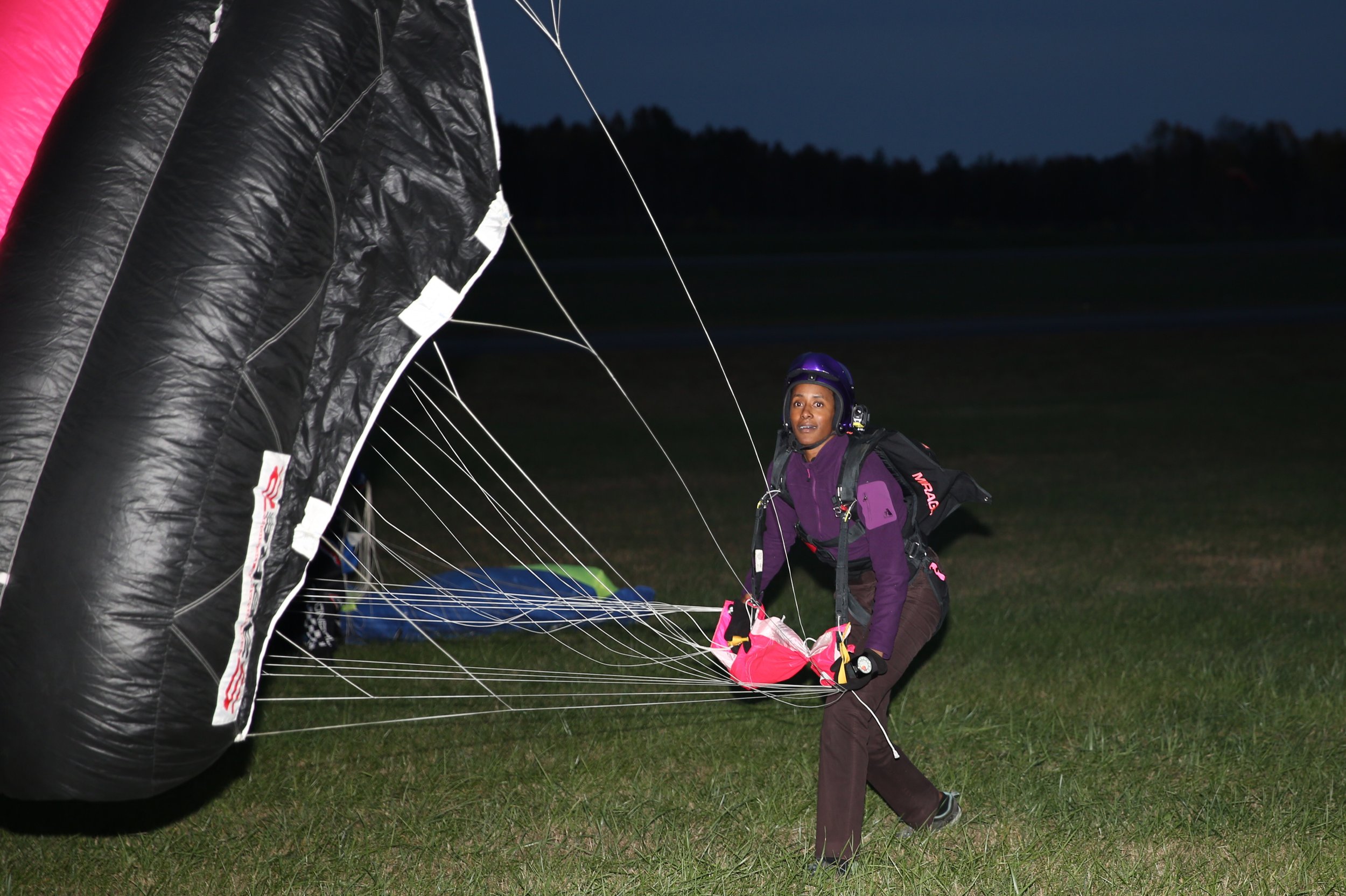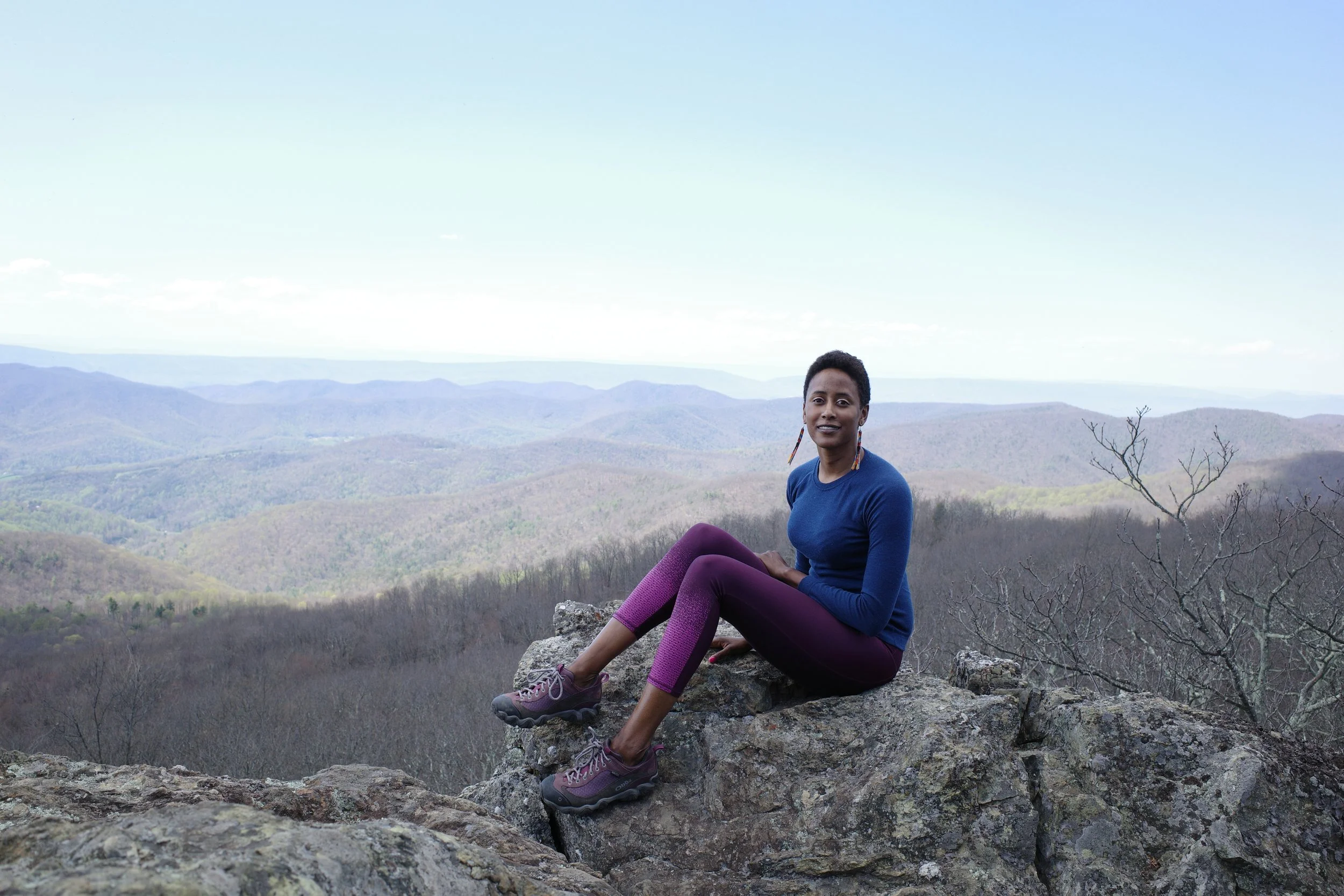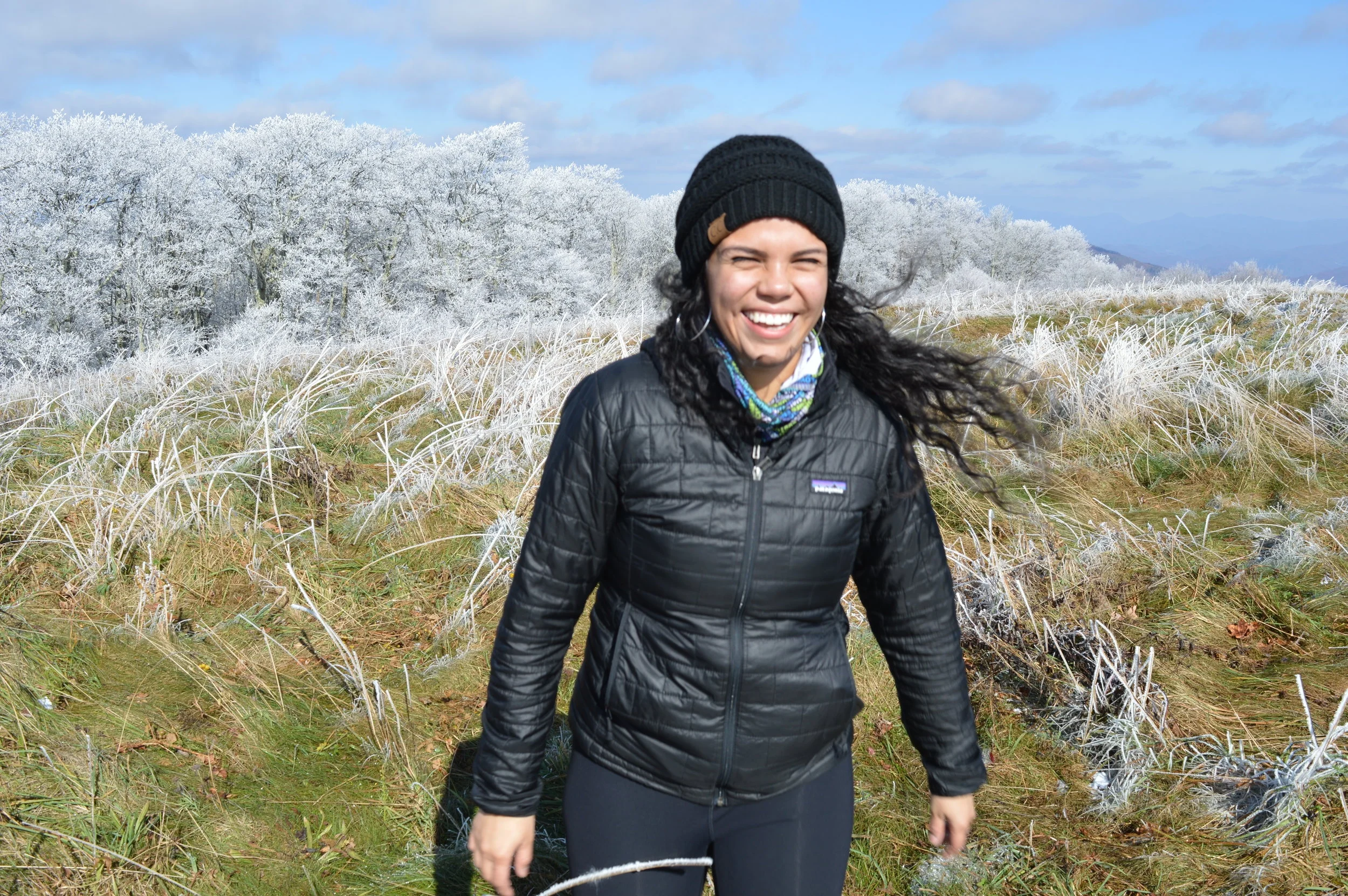How I Learned to Embrace Outdoorsy Stuff White People Like
Photo credit: Don Carrington
The Internet is a big place and yet the algorithm keeps serving me think-pieces from suburban Black kids who complain about how Black people aren’t nearly adventurous or outdoorsy enough. This is not that. This is the story of how I learned to stop worrying and embrace ‘stuff white people like’. You’d be surprised what got me there. So let’s go.
6. I was a 90s suburban Black kid
What does growing up as a 90s suburban Black kid have to do with embracing ‘stuff white people like’? More than you know. Growing up, I was spoon fed Black capitalism, respectability politics and Black exceptionalism. No, my parents didn’t teach me this but the message was everywhere in the suburbs. That narrative convinced me from a young age that “being the only one” was worth it. That working hard and excelling would give me the life I always wanted. In many ways, it set me up to make a lot of interesting choices later in life.
None of those life lessons reflected the importance of being rooted in community. None of them explained why I should seek out spaces where people who look like me are celebrated, not merely tolerated. But there was also something about being a 90s suburban Black kid that taught me to prioritize ‘white people stuff’ over Black culture and community. After all, my parents didn’t give me a ‘white’ name, send me to white schools and insist on White American Venacular English for me to limit myself. I was ready to try some outdoorsy ‘white people stuff.’ I just needed the money.
Photo credit: Danielle Williams
5. I got money
When I was younger, I spent most of my free time in the YA section of the library; which meant there was no shortage of real and imaginary white-coded activities that I wanted to try—from horseback riding to tabletop RPG to fencing. The only problem was those things cost money. They weren’t exactly in the budget–even for our comfortably middle class family. Instead, my mother signed all of her kids up for track & field. And I kept my adventures confined to the pages of my short stories.
The end result was this: when I started working and was no longer living paycheck to paycheck, I was finally ready to experiment. I didn’t have to stick to “culturally Black” sports that blended affordability and social mobility. I tried a tandem skydive once and signed up for skydiving lessons. Did that for the next 12 years. I paid for an introductory flight in a Cessna-172 and took flying lessons. Did that until I lost my medical. It turns out, the biggest obstacle preventing me from trying ‘stuff white people like’ wasn’t cultural, it was a lack of money. But culture also played a role.
Helicopter jumps over Fitzgerald, GA. Photo credit: unknown
4. I traded in community for ‘new experiences’
Growing up, I was always one of a few Black kids in the mostly white schools, neighborhoods and faith communities I belonged to. College was the first time my friend group was made up entirely of other Black women. It was an exciting time where I got to experience my cultural identity instead of intellectualizing it. I loved it. College taught me the importance of Black community in my life. Once I left school and entered the workforce, I was back to being Black mostly on paper. It was lonely and isolating. Outside of my job where my colleagues were almost entirely white men, I had a choice. I could use my free time to find and prioritize Black community or I could find a random white sport and stick with that for the next decade. So, um, that’s how I became a skydiver.
“White folks [...] can enjoy community and the outdoors equally because they are centered wherever they go.”
At the time, I didn’t fully realize that, after giving capitalism its due, the few hours I had to myself in the evening and on weekends were precious. I had to decide how to spend my limited time and resources. Black girl math and 2010s Internet meant finding Black outdoor community was still years away (at least, in my case). I had to choose.
I did try, ya’ll. Like every Black girl in a new city, I found a Black hair salon (well, barber shop) and a Black faith community (well, Dominican). I also began coaching.
I was definitely eager to recreate the good vibes from college. But I was lost when it came to making connections with other Black women in my mostly white Southern town. I was too awkward to make professional ones, and honestly, didn’t put that much effort in. That was a period in my life when I still thought that white men walked on fucking water, after all. So I think a part of me was hesitant to make professional connections with other equally powerless, marginalized people. I initially spent my weekends running and socializing with my faith community. But as soon as skydiving came into my life, it’s like a door opened and I stepped through—without fully realizing the consequences. I stopped prioritizing community with other Black and Brown people. My new sport was mostly white and male and I did not see the danger of that. I was hooked. I just wanted to feel the thrill of free-falling 13,000 ft and saving my own life. I just wanted to feel alive.
Photo credit: Don Carrington
3. I ignored the hidden costs of being “the only one”
Being the only person who looks like you in a mostly white outdoor community is a lonely experience. There are a lot of upfront costs and some hidden ones too. I mostly ignored them. I thought that I was somehow the exception. That my personality was so white people friendly that they would drop the racism and microaggressions and just want to be my friend. Did I actually think this? Maybe. I dunno. You can guess how that went.
I’ve been a skydiver for 12 years now. I’ve invested a lot of time and effort into cultivating friendships that went nowhere, relationships that went nowhere, community-building that went nowhere. I fell in love with skydiving which meant choosing to spend the majority of my free time with white people instead of with other People of Color. I didn’t realize that choice would have consequences. At least, not at first.
“And growing up as a 90s suburban Black kid had conditioned me to accept a level of social invisibility—of separateness. ”
Over time, it became more and more obvious that I couldn’t experience both skydiving and inclusive, racially diverse community. Choosing one meant giving up my dream of the other. I was young though. Or maybe, to be honest, I just didn’t think about it too much. I was so excited about everything I was learning and experiencing in the air. And growing up as a 90s suburban Black kid had conditioned me to accept a level of social invisibility—of separateness.
It’s true that “time and resources are finite” and that “if you are investing in a mostly white community that is not investing in you, you’re setting yourself up for loneliness later on.” I am still dealing with the unintended consequences: alienation, few meaningful connections with other Black women, a stubborn go-at-it-alone attitude. My 92-year-old grandma is an AKA. My mom is a Delta. They were raised in Black communities. And I am a skydiver in a sport with very few other Black women. I’m definitely not my ancestors' wildest dreams. They wanted better for me.
So what went wrong?
Photo credit: unknown
2. I lacked Black women mentors
Sure, I don’t think I was ever cut out for Greek life but I could’ve looked for Black women mentors earlier on had I realized the importance. I guess it was meant to be, according to every TikTok describing Token Black Girls in All-White Friend Groups as canon events. Best not to interfere.
Not having Black women mentors definitely cleared the way for me to get into ‘stuff white people like’. I was a young Black woman in the pre-TikTok South. I didn’t know anything about self care, community care, or self worth. #BlackBookTok, #BlackQueerTok and #Neurospicy were a decade away.
I did know how to launch an on-heading bow exit out of a Grand Caravan while head jamming the tail position. I did know how to lower myself onto the skid of a hovering helicopter without messing up the count. I did know how to use my rear risers to make it back from a long spot. I did know how to nail last man on a 12-way.
I knew how to do a lot of physical things and some technical ones. I didn’t know how to construct my life in a way that also prioritized my need for community. I certainly didn’t know how to decenter white people in my life. I still have a copy of a vision board I created in 2012. At the center is a cutout from Outside Magazine of a white aerobatic pilot, skydiver and BASE jumper and her then husband (just some guy). At the time, I thought my professional goal was to have a career in aviation and my personal goal was to be one-half of a skydiving power couple. Just like every other skydiver. Very original! It’s one thing to embrace ‘stuff white people like’ and it’s another thing to build an entire life around it without self reflection. I had no Black women mentors or role models at the time and it showed.
I think that, as a 20-something, not having mentors or coaches who looked like me, not having friends or colleagues who looked like me was challenging. I was a little lost. I was having a lot of fun jumping my way across the U.S. and visiting other drop-zones abroad but I didn’t reflect on how the sport was shaping my life. Not sure I would’ve listened anyway. Sigh. Thrill seeking isn’t in DSM-5 but let’s just say I was hooked.
Photo credit: Don Carrington
1. My mental health depended on it
‘Stuff white people like’ is a pretty broad category. Just ask Canadian Christian Lander who started the Stuff White People Like blog in 2008. I could’ve chosen anything but over the years I consistently chose to do outdoorsy white people things like distance running, rowing, hiking and skydiving. You could even say my mental health depended on it—on spending most of my free time outdoors, away from the city, in the mountains or on the river or at a municipal airport. It still does.
I’ve leaned on the outdoors for so long to maintain my mental health. It’s something I learned from my mother who first introduced me to distance running. Being outside makes me feel grounded. It makes me feel alive. Yes, I want meaningful connections with other Black women but I think, more than that, I want meaningful connections with other outdoorsy Black women and that’s okay. Outdoorsy is my subculture. Not my only one, but it resonates the most with me.
So, if given the chance to go back and make different choices, I’m not sure that I would. Now, of course, it’s a little easier to connect with other outdoorsy Black women online. When I was in my 20s, not so much. If I could change one thing, it would probably be that: High speed Internet sooner. More Black outdoor groups on Meetup sooner. And I hate to say it but Instagram and TikTok a lot sooner! In my 20s, I used to travel across the U.S. to meet up with other Black skydivers. It was worth the money. Outdoorsy white people stuff is one thing but outdoorsy Black people things…worth every credit card payment!
Photo credit: Don Carrington
Here’s the thing…
‘Stuff white people like’ has its pros and cons. White folks really have no equivalent to Black girl math and, honestly, I’m jealous. They can enjoy community and the outdoors equally because they are centered wherever they go. They’ve never had to choose one over the other. They are typically surrounded by people who look like them and who share their beliefs and worldview. They can spend all their free time outdoors and still make close friends, find long-term romantic partners and experience community.
I remember a decade ago when a family member took in my chasconita hair, my rumpled athletic clothing and asked me when was I going to settle down and focus on dating. At the time, I laughed. Now I understand. It’s Black girl math. I spent my 20s living like a white bro without any of the actual benefits. Now I’m doing cost benefit analysis. My girlfriend doesn’t jump every weekend so neither do I.
Today, I’m in my late 30s and I still enjoy hiking and skydiving. However, I’ve learned that my need for community is just as strong as my need for high-risk sports and the outdoors. So, after 12 years of investing in people and places that don’t invest in me, I am finally jumping less so I can sign-up for more adaptive rowing sessions, attend more indoor community events, spend more time with other queer Black women and repair some of the relationships I neglected while I was busy doing outdoorsy ‘stuff white people like’. And I won’t pretend it’s easy to enter spaces where I am constantly perceived by others after a lifetime of social invisibility. It can be unnerving. But therapy helps.
Are you into ‘stuff white people like’? How’s that BIPOC math workin’ out?





















Some People of Color don’t like the outdoors and that’s okay. They don’t need you to convert them. Here are eight reasons why you should leave your friends and family alone.